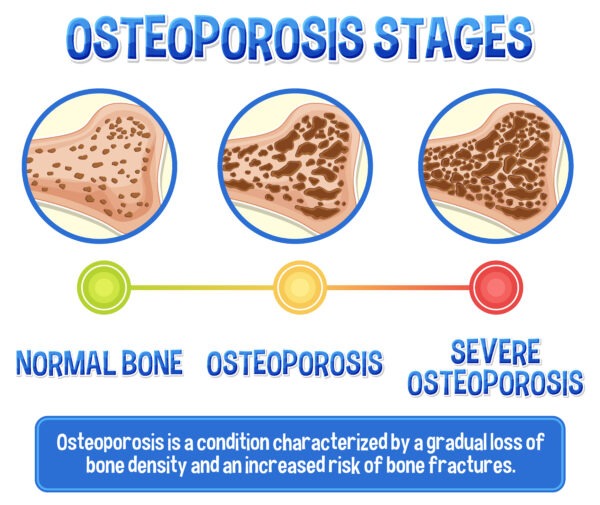
The human body is a complex machine and every part of it plays a crucial role in maintaining overall health. Bones are no exception! Bones provide strength, support, and shape to our bodies. But when they become weak, they are prone to fractures. Osteoporosis is a condition where our bones become fragile and brittle, increasing the possibility of fractures. It affects millions of people worldwide, particularly women. While it’s not considered life-threatening, it can adversely affect our quality of life.
What is Osteoporosis?
Osteoporosis is a condition characterized by low bone density, which leads to weak and brittle bones. Bone tissue constantly breaks down and replaces itself with new tissue. With osteoporosis, the rate of bone breakdown overtakes the rate of bone formation. As a result, bones become fragile, porous, and prone to fractures. This condition often doesn’t show any symptoms until a fracture occurs, which makes it hard to detect early.
What are the Risk Factors?
While anybody can develop osteoporosis, there are certain factors that increase the risk, including age, gender, family history, low body weight, and a sedentary lifestyle. Women are at a higher risk of developing osteoporosis because of the hormonal changes that occur during menopause. In men, low testosterone levels can also increase the risk. Additionally, certain medical conditions, such as hyperthyroidism, celiac disease, and rheumatoid arthritis, can contribute to osteoporosis.
How to Prevent Osteoporosis?
Preventing osteoporosis begins with developing healthy habits, particularly in early adulthood. The best way to prevent osteoporosis is through a healthy diet that includes foods rich in calcium and vitamin D, physical activity that involves weight-bearing exercises, avoiding smoking and excessive alcohol consumption, and regular bone density screening. Additionally, certain medications, such as bisphosphonates, can help slow bone loss and reduce the risk of fractures.
How to Manage Osteoporosis?
If you’re diagnosed with osteoporosis, there are several ways to manage it. Firstly, medications can be prescribed to prevent bone loss and increase bone density. Additionally, a balanced diet, including calcium and vitamin D, must be followed. Physical activity, particularly weight-bearing exercises, can help improve bone strength. Avoiding activities that might lead to fractures, such as high-impact sports, can be helpful too. A Physical Therapist is the top medical professional, skilled in providing the right exercises, progression of exercises and activities to avoid in order to optimize your bone health and function when it comes to osteoporosis.
In conclusion, osteoporosis is a condition that requires attention to prevent and manage. By adopting healthy habits in early adulthood, such as eating a calcium-rich diet, regular weight-bearing exercise, and avoiding smoking and excessive alcohol consumption, one can reduce the risk of developing osteoporosis. And if you’re diagnosed with osteoporosis, medications and lifestyle changes can help manage it. It’s important to prioritize bone health to maintain overall health and well-being.
Keep Reading…
Spring into Action | Changes in Weather Change Your Activity Level
Spring is in the air, meaning more than just [...]
Sticking To Your Exercise Program | How To Not Fall Off The Treadmill (or Bike, or Rower…)
New Year's resolutions around fitness and exercise are incredibly [...]



